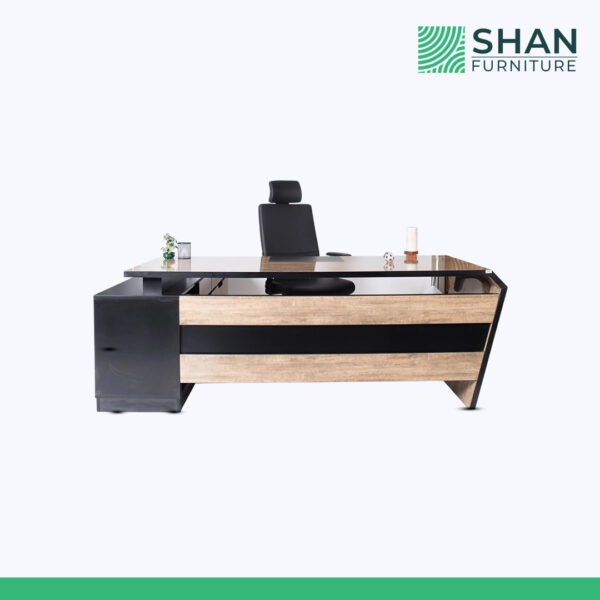When setting up a workplace, one of the most important investments you can make is in durable office furniture. An office table is not just a functional surface—it is a piece of furniture that must endure daily use, support technology, and maintain a professional appearance over time. Choosing the right material for an office table can make all the difference between a purchase that lasts for years and one that needs frequent replacement. Durability, aesthetics, and cost-effectiveness all play crucial roles in this decision, which is why understanding the qualities of different table materials is essential.
The Importance of Choosing the Right Material
An office table is more than just a desk. It becomes the central point of productivity, client meetings, and sometimes even team collaboration. Because of its frequent use, the material of the table must provide strength and resistance to wear and tear. A well-chosen material ensures longevity, reducing the need for replacements and additional expenses. Furthermore, the appearance of the table reflects the professionalism of a workplace. This is why businesses often weigh the balance between durability, style, and cost when making their choice.
Solid Wood: Classic Strength and Elegance
Solid wood has always been a favorite choice for premium office furniture. Known for its strength and timeless appeal, wood offers both durability and style. Tables made from oak, teak, or mahogany not only withstand years of use but also develop a rich character over time. The sturdiness of wood allows it to hold heavy office equipment without showing signs of strain. Additionally, solid wood tables can be polished or refinished, giving them the ability to look new even after years of usage. While they are often more expensive upfront, their long life makes them a worthwhile investment.
Engineered Wood: A Budget-Friendly Alternative
For those who admire the appearance of wood but prefer a more economical option, engineered wood provides a practical solution. Materials such as MDF and particleboard are crafted by compressing wood fibers or particles together. These tables are often finished with veneers or laminates that mimic the look of natural wood. While they may not be as strong as solid wood, they still offer durability for moderate office use. Engineered wood is especially popular in modern office spaces because it provides a balance between affordability and aesthetic appeal. Many people also consider engineered wood when comparing office table price in Pakistan, since it offers a polished look at a lower cost than solid wood.
Metal: Durability for Modern Workplaces
Metal office tables are well-known for their strength and minimal maintenance requirements. Steel and aluminum are commonly used materials that resist warping, cracking, and other common issues faced by wood. A metal frame paired with a wood or glass top creates a contemporary and industrial style, making it a popular choice for modern offices. Metal tables can withstand heavy usage, and their durability makes them particularly suitable for high-traffic office environments or shared workstations. While they may lack the warmth of wood, they make up for it with strength and resilience.
Glass: Contemporary Appeal with Proper Care
Glass office tables stand out for their sleek and modern design. A glass surface instantly elevates the appearance of a workspace, giving it a professional and stylish atmosphere. Tempered glass is often used in office tables to ensure strength and safety. However, glass requires careful maintenance, as it is prone to fingerprints, scratches, and visible dust. While glass tables may not be as robust as solid wood or metal, they offer a contemporary look that works well in creative industries, executive offices, or client-facing areas where style is equally important as function.
Laminate: Practical and Versatile
Laminate is another material that has grown in popularity for office furniture. Created by applying a printed surface onto a core material like MDF, laminate tables are affordable, versatile, and easy to clean. They can imitate the look of wood, stone, or even metal, providing flexibility in design. Modern laminate finishes are resistant to stains, scratches, and moisture, making them a practical option for busy workplaces. Though not as sturdy as solid wood or metal, they serve well in offices looking for cost-effective yet visually appealing solutions.
Stone: Premium Strength and Durability
For offices seeking luxury and ultimate durability, stone tables are an option, though less common due to their high cost and weight. Marble, granite, or quartz can be used to create stunning office tables that last for decades. Stone is naturally resistant to scratches, heat, and moisture, making it an incredibly durable choice. However, its heaviness and expense limit its use to executive offices or boardrooms where design and exclusivity are top priorities. Stone tables are best suited for organizations that want to make a statement about stability and long-term value.
Balancing Durability with Cost
When selecting office table materials, balancing durability with cost is crucial. Solid wood and stone may last a lifetime but come with a higher initial expense. Engineered wood and laminate offer affordability but may require replacement sooner. Metal provides a middle ground with strength and practicality, while glass adds style with some trade-offs in durability. Ultimately, the decision depends on the office environment, the amount of usage, and the budget. A table that fits both the functional and financial requirements of the workplace will always prove to be the best choice.
Final Thoughts
Investing in the right office table is an investment in the efficiency and image of your workplace. The material you choose determines not only the table’s longevity but also how it complements your office environment. Solid wood, engineered wood, metal, glass, laminate, and stone all bring unique advantages, and the best choice depends on your priorities. Whether it is elegance, strength, or affordability, each material serves different office needs. By carefully considering both durability and design, you can select an office table that enhances productivity and stands the test of time.



